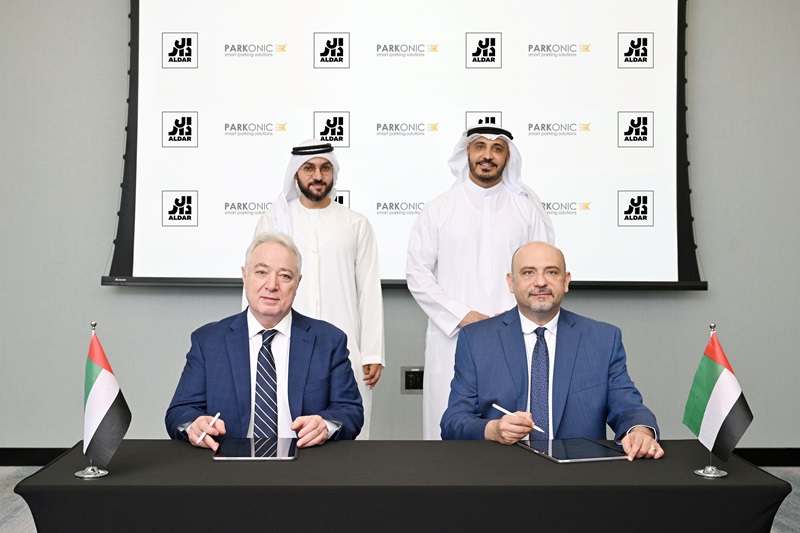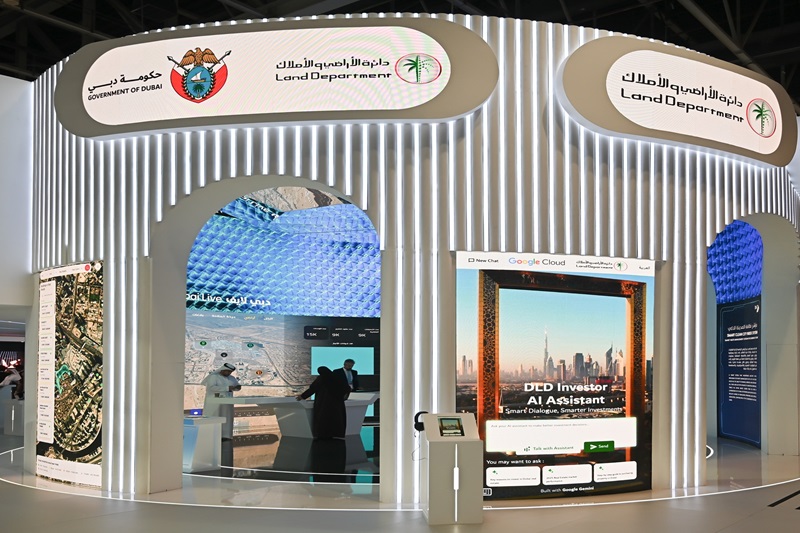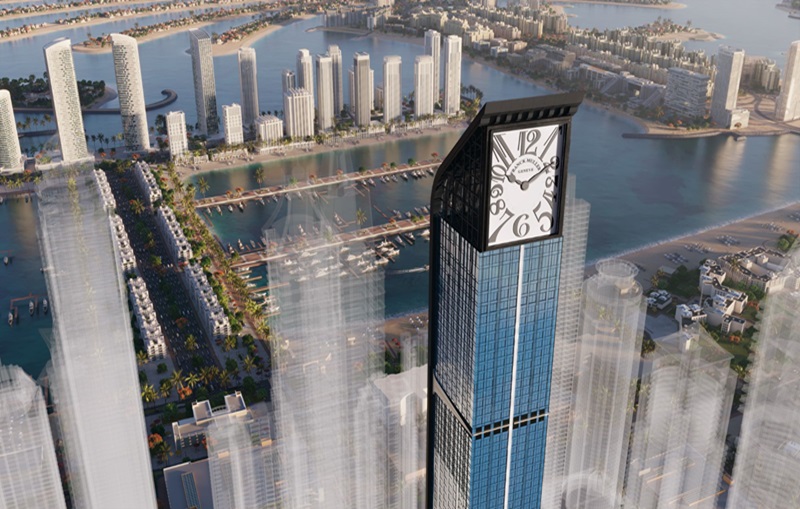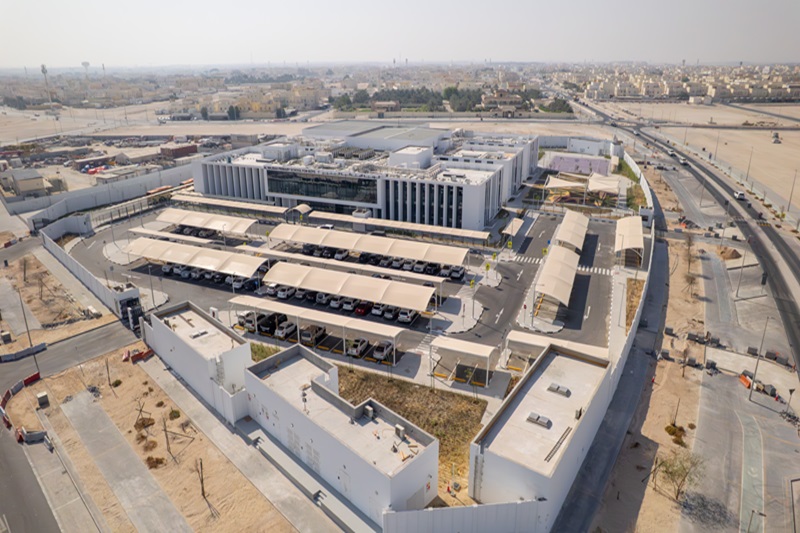.jpg)
Buildings are often unobtrusive contributors to our health and wellbeing. Humans spend, on average, about 90% of their time in buildings.
Currently, there is no unified definition of a ‘healthy building’. Nevertheless, experts agree that the term refers to structures that support the physical, psychological, as well as social health, and well-being of people in the built environment.
 “Buildings, be they commercial or residential, are important for people’s well-being. As people spend most of their time staying in these buildings, it is crucial that these structures are optimised for the physical and mental well-being of occupants,” says Ahmad M Abuothman, General Manager – Install GCC for Johnson Controls, a company that provides a range of systems and digital solutions to enhance the intelligence of buildings.
“Buildings, be they commercial or residential, are important for people’s well-being. As people spend most of their time staying in these buildings, it is crucial that these structures are optimised for the physical and mental well-being of occupants,” says Ahmad M Abuothman, General Manager – Install GCC for Johnson Controls, a company that provides a range of systems and digital solutions to enhance the intelligence of buildings.
Elements of green building design play a huge role in ensuring healthy spaces. Many experts consider healthy buildings to be the next generation of green buildings. By combining the concept of green buildings with new technologies, both work and residential areas can be optimised for health.
"The most efficient way developers and builders can ensure a healthy building environment is by leveraging technology. This helps them prioritise occupants’ health and wellness while driving cost savings and contributing to the country’s sustainable development goals,” says Abuothman.
However, one of the current challenges tech providers face is convincing building owners to adopt the technology. Considerable money and pain could be saved if buildings are optimised for human health during the design phase.
“Today, it is important that building owners adapt to intelligent technologies that promote the health, comfort, and efficiency of the building and its occupants,” says Abuothman.
This is especially true for shared spaces, such as offices, where there are higher chances of indoor air-quality problems, insufficient or excessive lighting, noise, and the like.
 “Humans spend as much as 90 percent of their time indoors, and a large percentage of that is spent at work. The challenge for facilities managers is to ensure time spent at work is as healthy as possible. In addition to the positive effects on human health, research suggests that healthy buildings can influence behaviour — including productivity. For building owners, technologies that create safer, more comfortable work environments are a wise investment in the wellbeing of employees and the future of their business,” says Aina Olmos, Business Development Director of VISIO, a leading provider of innovative and sustainable healthy building solutions.
“Humans spend as much as 90 percent of their time indoors, and a large percentage of that is spent at work. The challenge for facilities managers is to ensure time spent at work is as healthy as possible. In addition to the positive effects on human health, research suggests that healthy buildings can influence behaviour — including productivity. For building owners, technologies that create safer, more comfortable work environments are a wise investment in the wellbeing of employees and the future of their business,” says Aina Olmos, Business Development Director of VISIO, a leading provider of innovative and sustainable healthy building solutions.
“Organisations that optimise their workplace indoor environments will create the potential to improve their staff performance and productivity. Creating healthy buildings that improve productivity and support business is a multifaceted process. WELL Building standards, for example, encompass seven different building attributes, including fitness, mind, and comfort,” she said.
Some of the elements of healthy buildings include indoor air quality, thermal control, proper lighting, access to the natural environment, and ergonomics. Numerous studies have shown that better air quality, biophilic design, and the availability of quiet spaces in offices can facilitate better cognitive performance among employees.
 Healthy building solutions at workplaces must be customised as per the needs of the organisation, According to Dima Najib-Costa, MENA Workforce Advisory Lead, JLL, “An optimised building user experience is crafted and tailored to the organisation. It should be a synergy of the emotional, digital and physical journey, alleviating pain points, and essentially creating an enjoyable experience or place that individuals keep gravitating back to.”
Healthy building solutions at workplaces must be customised as per the needs of the organisation, According to Dima Najib-Costa, MENA Workforce Advisory Lead, JLL, “An optimised building user experience is crafted and tailored to the organisation. It should be a synergy of the emotional, digital and physical journey, alleviating pain points, and essentially creating an enjoyable experience or place that individuals keep gravitating back to.”
The easiest way to regulate indoor conditions is by using IoT and AI solutions. “High CO2 levels can cause offices to feel ‘stuffy’, which is mistakenly put down to high temperatures. An increased intake of CO2 can lead to poor decision-making, slower reaction times, and increased tiredness among employees. The easiest and most cost-efficient way to regulate this is using Internet of Things (IoT) based CO2 sensors together with remotely manageable HVAC and ventilation systems. This can lead employees to work up to 60% faster in lower CO2 concentrations,” says Aina.
HVAC systems, particularly, play a huge role in creating healthy environments in buildings. Hospitals, in particular, have to focus on the design of their air conditioning systems to ensure a clean and germ-free environment that
prevents diseases and contributes to the well-being of patients.
With the right technology in place, the indoor conditions in any building can be improved. “Making a building healthy does not have to mean a complete overhaul. With the right approach and technologies, even legacy systems can become part of a strategy to protect occupant safety. We are locked in a global battle for talent, and business leaders are eager to find new ways to attract, retain, and enhance the performance of their employees. Few of them realise that their buildings could play a vital role in the health of their business,” says Aina.
According to the International WELL Building Institute (IWBI), a global authority for transforming health and well-being in buildings, organisations, and communities around the world, there is a huge focus on building health and well-being currently in the Middle East.
 “IWBI has been putting research at the intersection of well-being and the built environment into practice for years, and we’ve seen a massive uptake in the Middle East, with more than 21mn square feet of real estate enrolled in WELL programs across eight countries, including Bahrain, Egypt, Israel, Lebanon, Saudi Arabia, Turkey, Qatar, and the United Arab Emirates,” says Ann Marie Aguilar, Senior Vice President, Commercial, EMEA, at International WELL Building Institute.
“IWBI has been putting research at the intersection of well-being and the built environment into practice for years, and we’ve seen a massive uptake in the Middle East, with more than 21mn square feet of real estate enrolled in WELL programs across eight countries, including Bahrain, Egypt, Israel, Lebanon, Saudi Arabia, Turkey, Qatar, and the United Arab Emirates,” says Ann Marie Aguilar, Senior Vice President, Commercial, EMEA, at International WELL Building Institute.
Launched in 2014, the WELL Building Standard is among the world’s first building certifications that focus exclusively on human health and wellness. “At the International WELL Building Institute, we are committed to working to improve human health, well-being, and productivity in the buildings, organisations, and communities where we spend our lives. Buildings are more than just shelter – they’re the places where we earn our living, spend time with loved ones, gain inspiration, experience adventure, rest and heal. Be it air and water quality, thermal comfort or proper acoustics – first-rate indoor spaces matter. IWBI first launched the WELL Building Standard in 2014 after a six-year, expert peer review process,” says Ann.
The institute’s newest certification, the WELL Building Standard version 2 (WELL v2) includes a set of strategies to advance human health through design interventions and operational policies.
“WELL v2 is a performance-based rating system for measuring, certifying, and monitoring features of our buildings that impact human health and well-being, through air, water, nourishment, light, movement, thermal comfort, sound, materials, mind, and community. WELL is grounded in a body of evidence-based research that explores the connection between the buildings we occupy and the health and well-being impacts on the people inside these buildings,” she adds.
The next-gen green buildings








.jpg)
.jpg)





